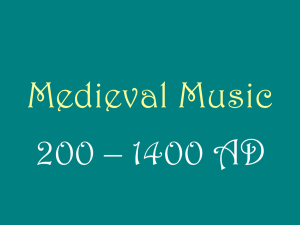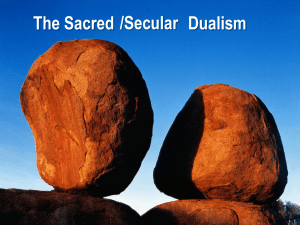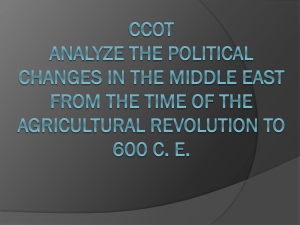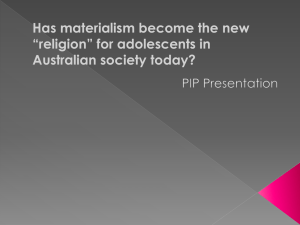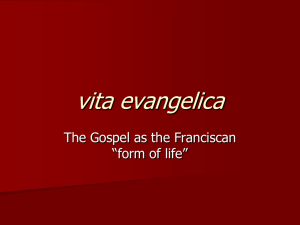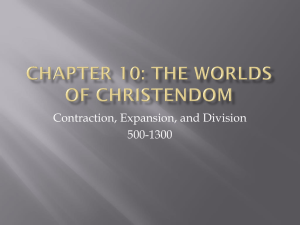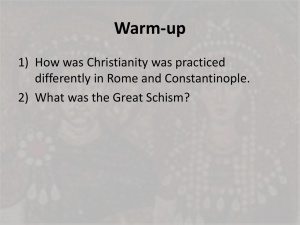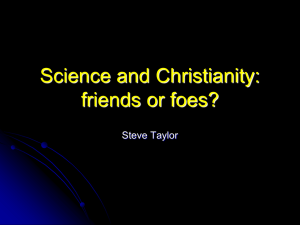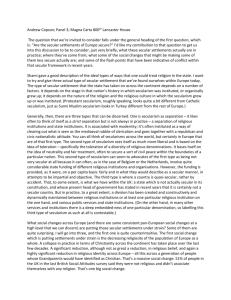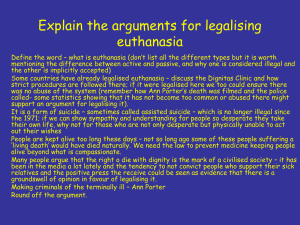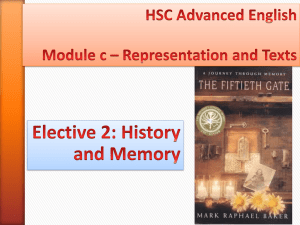Knott Cambridge Changing Media Representations
advertisement
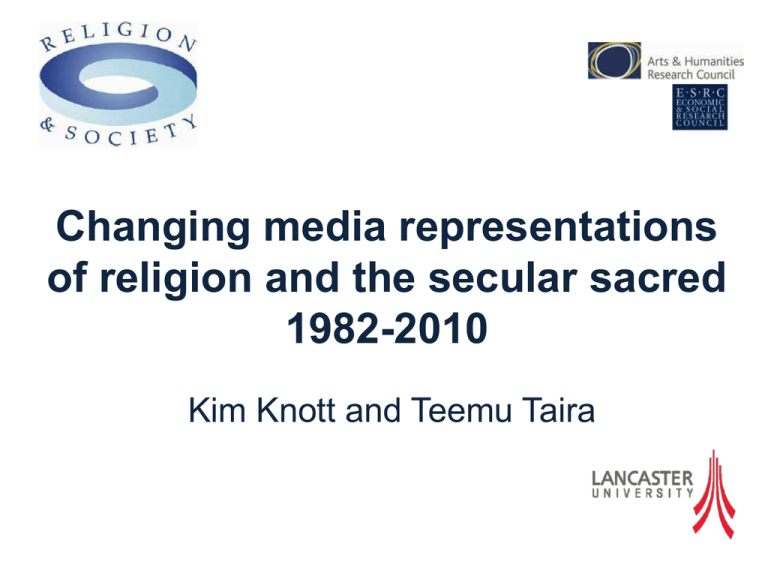
Changing media representations of religion and the secular sacred 1982-2010 Kim Knott and Teemu Taira Religion in the media: assumptions • As society has become more secularized, media coverage of religion has declined and been marginalized (Holmes). • Because of their commercial interests and priorities, the media are only interested in bad news and controversy about religion (various). • The media’s reporting of religion is unfair and inaccurate because of the secularity of media professionals who have no interest in religion or are biased against it (Marshall et al, 2009). • Religion is ‘positioned, represented and constructed as a minority interest’ by the media (Woodhead, 2012). • ‘Contemporary religion is increasingly mediated through secular, autonomous media institutions, and is shaped according to the logics of those media (Lövheim and Lynch, 2011). • The media have become ‘a form of religion in themselves’ (Davie, 2002). Media Portrayals of Religion and the Secular Sacred 1982-83 and 2008-10, University of Leeds Two research projects the aims of which were, • to analyse portrayals of popular religion and the secular sacred in a selection of British newspapers and terrestrial TV channels to examine media representations of religious issues, beliefs and practices and to uncover and interpret inherent media values and interests • to examine people’s reception and experience of religion in the media • to analyse the mass media treatment of a widely reported event or controversy involving religion • to compare findings from the two projects And to consider media representations of religion and their reception in light of theoretical debates about secularization and re-sacralization, to see what’s changed. Comparative quantitative analysis 1982-83 2,453 references (one month’s newspapers and one week’s TV) ______________________________________ 2008-09 4,370 references* (one month’s newspapers and one week’s TV) * Larger newspapers; similar number of TV refs in both periods Conventional and common religion, and the secular sacred • Conventional religion: official, organised religion, e.g. Protestantism, Church history, Islam, religious cosmology, religious practice. • Common religion: unofficial, unorganised belief and practice, e.g. magic, psychic powers, fortune telling, mythology. • Secular sacred: organised and unorganised secular ideologies, beliefs and values, e.g. secularism, atheism, human rights, sacredness of life or nature. References to conventional and common religion and the secular sacred, 1982-3 and 2008-9 (%) Comparative analysis, 1982-3, 2008-10: Christianity Comparative analysis, 1982-3, 2008-10: Islam Comparative analysis, 1982-3, 2008-10 Secular sacred Comparative analysis 1982-3, 2008-10 Common Religion* Islam in the newspapers, 2008 Topic Number of articles Conflict 23 Terrorism 19 Extremism 14 Cultural/legal differences 8 Politics 6 Anti racism 4 Art 3 Women/Gender 3 Community Relations 3 Immigration 2 Religious Practice 1 Relationships 1 Total 87 How are Muslims constructed in the media coverage? • There is some acknowledgement of moderate Muslims in the conservative press but Muslims are mainly conceptualised in their extreme form as ‘preachers of hate’. • There is little alternative discourse in the conservative press (mainly in the form of letters). • The liberal press and BBC provide some room for alternative views and Muslim voices. Conservative media discourse on Christianity 2008-10 • Society is losing its moral fabric: Christianity/Christian leaders are flawed moral guides • Christianity is a fundamental part of British tradition and identity • Christianity is marginalised/persecuted by the secular state as a result of equality legislation, political correctness and the increasing ‘Islamification’ of society Britain perceived to be Christian first, then secular and plural Liberal media discourse on Christianity 2008-10 • Religion should be a personal matter, but faith-based organisations may have role to play in public life • Christianity is just a minor player in contemporary cultural diversity • We are increasingly secularised and Christianity is in decline • Christianity is morally and intellectually irrelevant and moribund • Christianity is illiberal and an obstacle to the human rights agenda Britain is perceived to be secular and plural first, and only notionally Christian Christian continuities • Dominance of Christianity, particularly with reference to heritage and landscape • Representations of clergy in fiction and comedy • Language infused with references to Christian concepts and practices, as well as to common religion Atheism and secularism • • • • Recent rise of both Celebrity atheists Polarization of atheism and religious identities Atheism often conflated with a scientific approach and explanation • Media support for secularism and Christianity, but not atheism which is often depicted as aggressive (and seen as barking mad by tabloid press) Visiting Popes, 1982 and 2010 • In 1982 we concluded that the TV portrayal of the papal visit was the nation’s experience of the papal visit. Television provided access to the Pope for the majority of the population, challenging our conception of both the gap between representation and reality, and of the negative relationship between media and religion. It was no different in 2010. • We saw the media construction of two different Papal personalities: charismatic (John Paul II); shy and thoughtful (Benedict XVI). • The Papal message changed from ecumenism in 1982 to the marginalisation of Christianity in 2010. The media – rather than the Pope – added interfaith issues to the agenda. • This was framed in the media as a schism between ‘people of faith’ and ‘atheists and secularists’, and was one of the main differences to 1982 when the dominant discursive frame juxtaposed Catholics and Protestants, with ecumenism the bridge between the two. Religion in the media: assumptions • As society has become more secularized, media coverage of religion has declined and been marginalized. NO • Because of their commercial interests and priorities, the media are only interested in bad news and controversy about religion. NO • The media’s reporting of religion is unfair and inaccurate because of the secularity of media professionals who have no interest in religion or are biased against it. NO, though not really discussed • Religion is ‘positioned, represented and constructed as a minority interest’ by the media. YES and NO • ‘Contemporary religion is increasingly mediated through secular, autonomous media institutions, and is shaped according to the logics of those media. YES • The media have become ‘a form of religion in themselves’. NO
